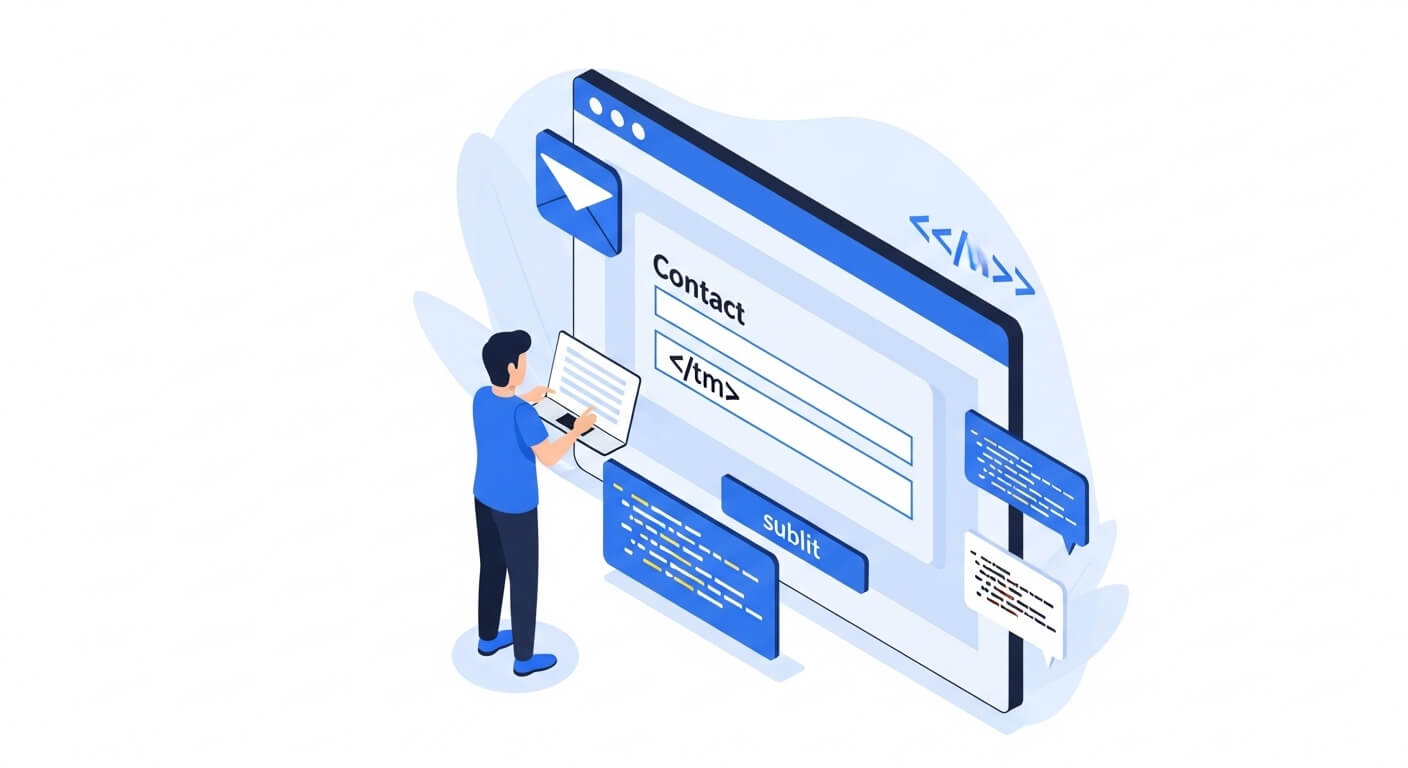If you’re new to web development, understanding how to make a contact page in HTML is a great starting point. A well-structured contact page allows your visitors to reach you quickly, increases engagement, and builds credibility.
In this guide, you’ll learn how to make a contact page in HTML from scratch with step-by-step instructions. We’ll also provide best practices, explain HTML form elements, and include styling tips for a better user experience.
You may also like: HTML Meta Tag Redirect: 7 Powerful Ways for Seamless Redirection
Why You Need a Contact Page
A contact page is a bridge between you and your visitors. Whether you’re running a blog, portfolio, or business website, it’s essential to allow users to get in touch.
Without a contact page, potential clients may walk away. And having one that’s poorly built? That can be just as harmful.
Tools You Need Before Starting
Before learning how to make a contact page in HTML, make sure you have:
- A code editor (e.g., Visual Studio Code)
- Basic knowledge of HTML and CSS
- A local server (optional, for testing)
- A browser for previewing
Basic Structure of an HTML Contact Page
Your HTML contact page will include:
<!DOCTYPE html>declaration<html>,<head>, and<body>sections- A
<form>with various input fields
Here’s a simple skeleton:
<!DOCTYPE html>
<html lang="en">
<head>
<meta charset="UTF-8">
<title>Contact Us</title>
</head>
<body>
<h1>Contact Us</h1>
<form action="your-server-endpoint" method="POST">
<!-- Input fields go here -->
</form>
</body>
</html>Step-by-Step: How to Make a Contact Page in HTML
Here’s how to make a contact page in HTML in just a few steps:
<form action="https://formspree.io/f/your-form-id" method="POST">
<label for="name">Your Name:</label><br>
<input type="text" id="name" name="name" required><br><br>
<label for="email">Your Email:</label><br>
<input type="email" id="email" name="email" required><br><br>
<label for="message">Your Message:</label><br>
<textarea id="message" name="message" rows="6" required></textarea><br><br>
<button type="submit">Send</button>
</form>This form includes the basic elements: text input, email input, and a textarea for messages.
Adding CSS for Better Styling
A plain form isn’t user-friendly. Here’s some CSS to enhance it:
<style>
body {
font-family: Arial, sans-serif;
margin: 40px;
background-color: #f4f4f4;
}
form {
background: #fff;
padding: 20px;
border-radius: 8px;
max-width: 500px;
margin: auto;
box-shadow: 0 2px 10px rgba(0,0,0,0.1);
}
input, textarea {
width: 100%;
padding: 12px;
margin-bottom: 15px;
border: 1px solid #ccc;
border-radius: 4px;
}
button {
background: #007BFF;
color: #fff;
padding: 12px;
border: none;
border-radius: 4px;
cursor: pointer;
}
button:hover {
background: #0056b3;
}
</style>Using JavaScript for Form Validation
Form validation improves user experience. Add this before the closing </body> tag:
<script>
document.querySelector("form").addEventListener("submit", function(e) {
const name = document.getElementById("name").value.trim();
const email = document.getElementById("email").value.trim();
const message = document.getElementById("message").value.trim();
if (!name || !email || !message) {
alert("All fields are required!");
e.preventDefault();
}
});
</script>Connecting Your Form to Email (with Formspree)
Without backend knowledge, you can use Formspree or Getform:
- Go to Formspree
- Create a free account
- Copy your form endpoint URL
- Replace the
actionin the form with the endpoint
This way, when someone submits the form, you’ll get an email.
SEO Best Practices for Contact Pages
Learning how to make a contact page in HTML isn’t just about design. For SEO:
- Use a descriptive
<title> - Add meta tags
- Ensure the page is mobile-friendly
- Include keywords naturally
- Use semantic HTML
Also, link to your privacy policy and terms of service.
Common Mistakes to Avoid
- Forgetting the
method="POST" - Not validating inputs
- Using vague field names (e.g.,
input1,input2) - Making the form non-responsive
Stay user-focused, not just code-focused.
Final Thoughts
Now you know how to make a contact page in HTML, and more importantly, how to do it the right way. Whether you’re building a personal portfolio or a professional website, a clear and functional contact form is crucial.
If you’re interested in more advanced forms, consider integrating tools like Google reCAPTCHA or embedding maps for physical addresses.
Want to take it a step further? Check out:


Leave a Reply